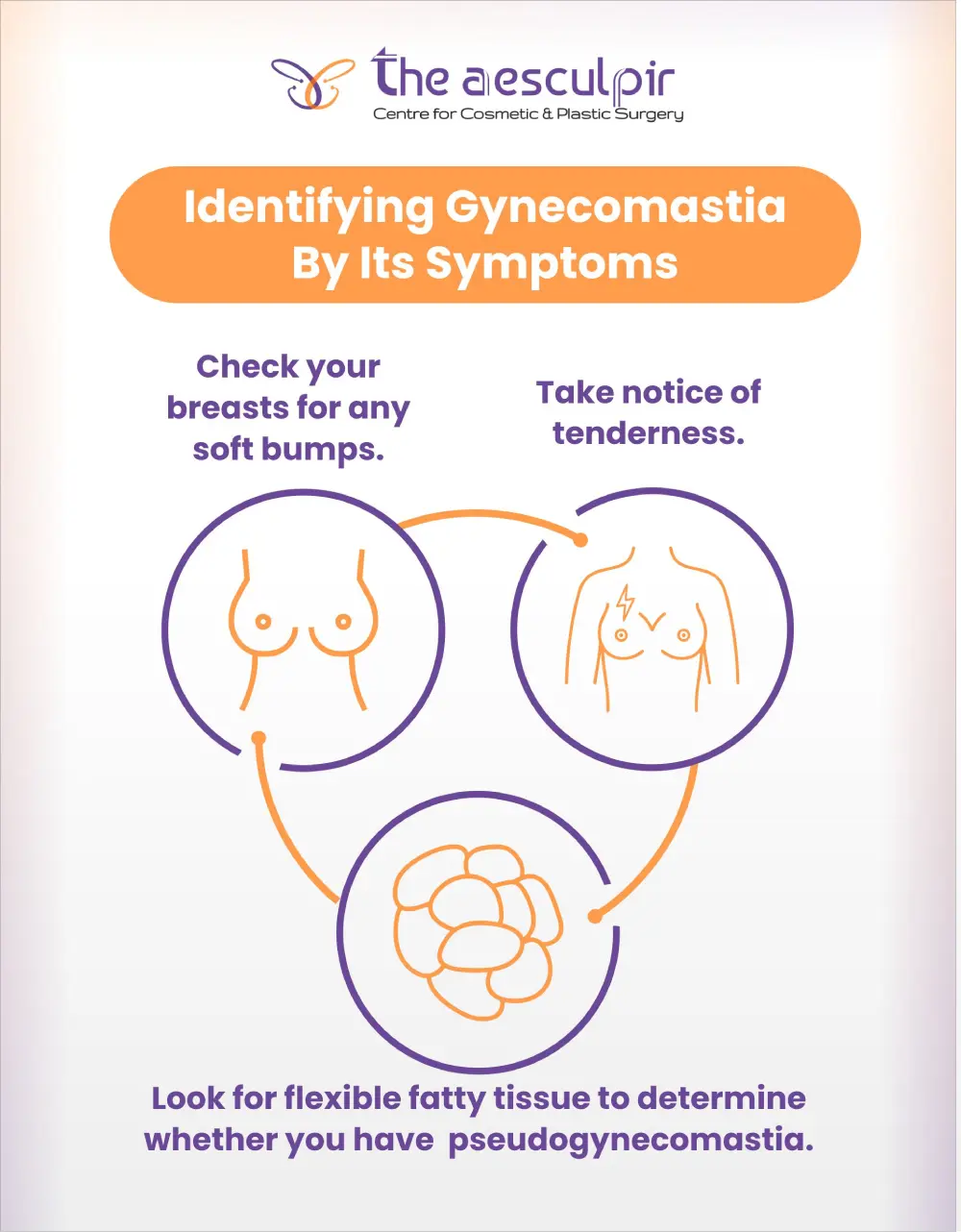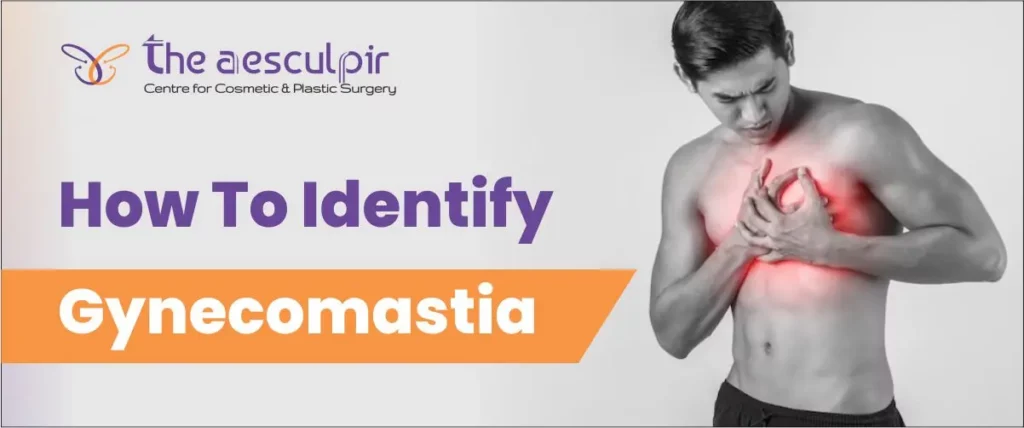Your chest is a physical reflection of your self-confidence and manliness. Everyone wants to have a taut breasts. In contrast, if you have male gynecomastia, also referred to as “man-boobs,” this fantasy may occasionally become a nightmare.
Gynecomastia is one of the most unsettling physical conditions that males can have. The fact that not everyone can tell the difference between typical chest fat and gynecomastia makes it particularly alarming. At first glance, there isn’t much of a difference in appearance; however, with a little study, you can distinguish between the two and learn how to get rid of each.
What Is Gynecomastia?
Males with enlarged glandular tissue and fat-mimicking female breasts are called “male gynecomastia.” Nipple swelling to clearly enlarged breasts that mimic those of a woman are examples of severity. It frequently causes embarrassment, mental distress, and a lack of confidence in boys and older guys. Gynecomastia in males can affect either one or both sides of the chest, but most cases are bilateral.
Some males may even avoid certain intimate behaviors or physical activities to hide their condition. In more severe cases of gynecomastia, the weight of the extra breast tissue tends to sag the breasts and stretch the areola (the dark skin encircles the nipple). Surgery can sometimes be used to reduce extra tissue and enhance the size and placement of the areola.
| Related: Gynecomastia Surgery – Benefits Vs. Risks |
How To Know If You Have Gynecomastia?
Gynecomastia can manifest as pain or soreness, which may worsen over time, and swelling. Under one or both nipples, it feels like a rubbery mass to the touch. Having a breast-like look is an indication of something.
Gynecomastia is frequently mistaken for the expected presence of fat tissue, especially in young, overweight males. Therefore, it is best to leave an exact diagnosis and conclusion to a trained medical professional.
Treatment
Surgeries
Experience
Quality
Identifying Gynecomastia By Its Symptoms
Check your breasts for any soft bumps.
True gynecomastia is marked by the development of swollen breast tissue in one or both breasts. This tissue may be right behind the breast. With your fingers, gently touch your breasts. You should detect a soft, rubbery mass in one or both breasts if you have gynecomastia.
If you discover a lump in your breast, immediately see a specialist. Unusual lumps could be tumors.
Gynecomastia can affect either one breast or both breasts simultaneously.
The lump’s size can differ and might not be the same in each breast. Boys who are in puberty usually have breast buds that are the size of a nickel or quarter.
| Related: Gynecomastia vs. Chest Fat: What Is The Difference |
Take notice of tenderness.
Gynecomastia may make your breast sore, particularly when you press or touch it. Make an appointment to see your doctor as soon as possible if your breasts are giving you a lot of pain or discomfort.
Look for flexible fatty tissue to determine whether you have pseudogynecomastia.
True gynecomastia is distinct from breast growth brought on by chest fat accumulation. You might have pseudogynecomastia if your breasts are enlarged and soft to the touch, but you don’t feel any soreness or lumps there or behind your nipple. Losing weight typically cures this problem. Since fat tissue tends to increase the body’s estrogen production, being overweight may also add to the emergence of true gynecomastia.
| Related: Gynecomastia Surgery: Procedure, Recovery, Cost, and More |

How To Tell Gynecomastia Apart From Chest Fat
Without a doubt, males frequently mix up normal fat deposits in the chest area with true gynecomastia, not only because the two conditions look so similar but also because many of the causes of the two conditions may be the same.
Between gynecomastia and pseudogynecomastia, there are some methods to distinguish:
- Gynecomastia is characterized as an overgrowth of glandular breast tissue in the male pectoral area.
- Fatty deposits in a man’s pectoral area due to obesity and/or excessive weight increase are known as pseudogynecomastia.
- A hard lump under the nipple/areola area can be felt or sensed with gynecomastia. Usually, the lump is harder than fat. One of the best methods to distinguish it from pseudogynecomastia is through this. It’s also possible that this lump hurts or is sensitive to contact. You can frequently determine which of the two diseases you have by feeling for this lump. There is no observable firmness or bulk in those with only pseudogynecomastia or chest fat. Instead, the fat feels uniform throughout the entire pectoral area and is soft to the touch.
- Gynecomastia can make the chest look firmer, while pseudogynecomastia can make the masculine breast look more saggy.
- If you maintain a healthy diet and regularly exercise, normal chest fat can disappear. Gynecomastia, on the other hand, cannot be eliminated by altering one’s diet or engaging in regular exercise; the only way to lessen it, once again presuming that all non-surgical therapy options have been tried without success, is through surgical procedures.
| Related: Is Gynecomastia Treatment possible without Surgery? |
Conclusion
A few crucial indications can help you distinguish between gynecomastia and chest fat, even though it may be difficult to do so. Make an appointment with a specialist for an official diagnosis and the best method to determine the cause if you are uncertain whether you are experiencing gynecomastia or typical chest fat, particularly if you are experiencing bothersome symptoms like pain.
Frequently Asked Questions
How Might I Avoid Gynecomastia?
You can’t do much to stop gynecomastia from happening. Avoiding anabolic steroids, booze, and other drugs can help prevent gynecomastia. In addition, if you are taking a drug that has been linked to the development of gynecomastia, you should speak with your primary care provider to see if there are any available alternatives.
What are the symptoms of Gynecomastia?
Men’s gynecomastia signs and symptoms:
- Extra skin or what looks to be a hanging chest
- Pain and pus discharge
- A slight puffiness of the chest
- Overgrowth of mammary tissue and a concentration of fat
